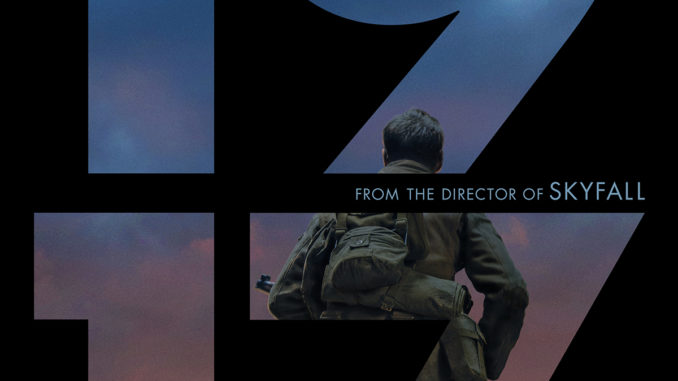
Sam Mendes’ thrilling, edge-of-your-seat wartime epic “1917” demands to be seen on the biggest screen possible.
While the film doesn’t break new ground thematically, its simulated single-shot approach illustrates the deeply immersive qualities of film.
The year is 1917 in northern France. Young British soldiers Lance Corporal Blake and Lance Corporal Schofield — played by Dean-Charles Chapman and George MacKay, respectively — are tasked with delivering a message to British forces on the Western Front. Loads of German soldiers and artillery are lying in wait, unbeknownst to the commanders of the Second Battalion. According to General Erinmore, dryly played by Colin Firth, nearly 1,600 soldiers’ lives are at risk, including Blake’s older brother. Unfortunately, the phone lines have been cut. Blake and Schofield must journey across no man’s land and bombed-out French villages to reach the Second Battalion, experiencing the horrors of World War I along the way.
While this plot alone provides the ingredients for a race against the clock drama à la Christopher Nolan’s “Dunkirk,” the innovative cinematography solidifies “1917” as a step forward for dramatic cinema.
Mendes’ decision to make the film appear as a one-shot — helmed by none other than Roger Deakins of “No Country for Old Men” and “Blade Runner 2049” fame — creates the illusion that viewers are actually experiencing this urgent mission along with the two leads.
The logistics behind the film are mind-bogglingly obsessive. Every line of dialogue and camera movement was timed and rehearsed to a T by the actors and crew. Nearly a mile of trenches were constructed. Weather patterns were monitored for moment-to-moment continuity. Camera operators followed the actors by foot, motorcycle and drone. A new type of portable camera was even created, designed to smoothly rotate 360 degrees around the actors. Sounds like something a Truman State University student would create.
The camera remains locked on Blake and Schofield from start to finish, in constant forward momentum. These characters can’t rest until their task is complete, and neither can viewers. Moments of conversation, song and respite are fleeting and weighed down by the desperate nature of their mission, but they remain moments to cherish nevertheless.
On top of all this, Deakins’ knack for inventive shot compositions is on full display. While the film isn’t “pretty” by any means — except for a jaw-droppingly gorgeous nighttime sequence illuminated by flares and a burning church — the surprisingly intimate, focused approach creates beautifully orchestrated suspense.
The claustrophobia and dread are palpable, as viewers only see what Blake and Schofield see at any given moment. One sequence in a German bunker involving pesky rats and trip wires, for example, is admirable for how it holds viewers in a disorienting, vice-like grip not unlike the central characters.
This sequence, along with several others which show the staggering loss of life associated with war, has been seared into my memory. Except for a few grandiose set pieces near the film’s conclusion, “1917” depicts the aftermath of battles more so than the battles themselves. At times, Blake and Schofield seem like youthful souls overlooking a foreign planet of apocalyptic violence and destruction — symbolic of the tragedy of war itself.
The two leads — MacKay especially — give believable performances. “1917” doesn’t spend much time on Blake and Schofield’s backstories, however, trusting that the immediate situation is enough to warrant compassion and sympathy from viewers.
Despite the technical brilliance and acting on display, “1917” remains a thoroughly Hollywoodized product, containing plot clichés of sacrifice and dehumanization that are conventional in comparison to the film’s cinematic presentation.
The casting of big-name actors like Firth, Mark Strong, Andrew Scott and Benedict Cumberbatch also robs certain scenes of emotional impact.
Much like “Bombshell” — a different kind of war film entirely — the casting of these easily recognizable actors distracts from the events at hand. Combined with occasionally comical dialogue, their scenes felt like missed opportunities.
Lastly, Thomas Newman’s score works well to amplify a few sequences, but remains heavy-handed throughout. During climactic moments, it essentially tells viewers how to feel. A couple sequences feel ripped straight out of a video game, as the propulsive score signifies a particular character’s plot armor and seemingly superhuman ability to withstand pain.
Despite the film’s flaws, “1917” remains an intense experience worth watching for Mendes’ undeniably impressive — and likely Oscar-winning — vision of World War I.
